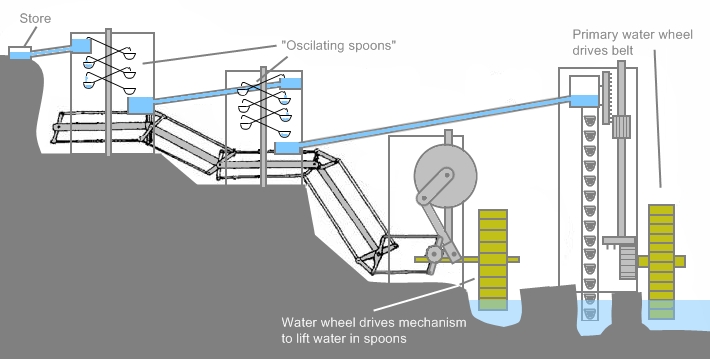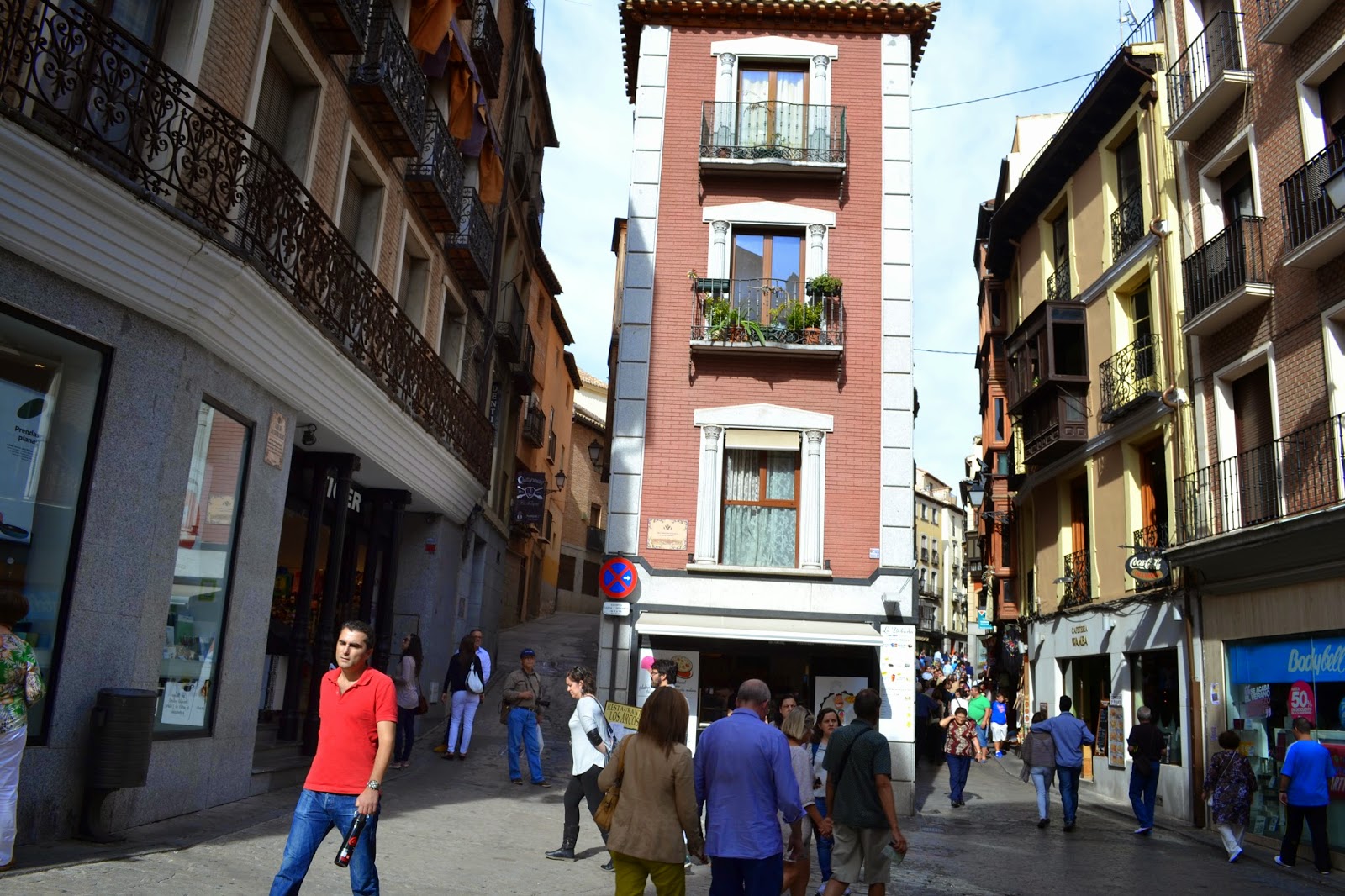Note. most photos in this Blog are brought to you by Kyran.
OK lets kick this Blog off!
This weekend was a combination of preparing for a winter as if I have never seen a winter, and getting some sight-seeing done.
In Spain there is a chain of stores called Primark, I'm going to say it is amazing!
For friends and family in Australia its a little like Kmart, only stuff is actually good quality.
So we ventured to Primark and stocked up on jumpers and socks for winter, then had to go home to throw out the old and in with the new.
So that was our Saturday... And now for Sunday!
We started by quickly visiting Primark again for the things that we decided that we had forgotten the other day and then headed on to Toledo, south of Madrid.
Toledo, for those of you who missed it in previous Blogs was once the Capital city of Spain until Charles III of Spain took it upon himself to change the capital to Madrid.
Toledo is the home of more than 2,000 years of history, where people lived in the area in pre-Roman times.
The old city is located on a mountaintop with a 150 degree view, surrounded on three sides by a bend in the Tagus River, and contains many historical sites.
Toledo was famed for religious tolerance and had large communities of Muslims and Jews until they were expelled from Spain in 1492.
Toledo has been a traditional sword-making center since
about 500 BC, and came to the attention of Rome when used by Hannibal in the Punic Wars. Soon, it became a common source of weaponry for the Roman Legions.
This leads to the next photos and tradition that has come about with my family. Whenever we go to Toledo we buy a pocket knife that was made there. Below is Kyran's knife and some of the historical replica armour and weapons displays in the local shop windows.
Here seems like as good a place as any to throw in some photos from in and around Toledo.
Me with the wall of Toledo in the background and the old city on the hill.
Another photo with the wall and the old city in the background, as you can see it is very green in Toledo compared to its surroundings (see below)
Above you can also see an water wheel in River.
Artificio de Juanelo was the name of two devices built in Toledo in the 16th century by Juanelo Turriano. They were designed to supply the city with a source of readily available water by lifting it from the Tagus (Tajo) river to the Alcázar. Now in ruins, the precise details of the operation of the devices are unknown, but at the time they were considered engineering wonders.

Continuing on...
The Osborne bull (in Spanish: Toro de Osborne) is a 14-metre (46 ft) high black silhouetted image of a bull in semi-profile.
In 1994 a law was passed prohibiting all roadside advertising, and the bulls were therefore to be removed. By this time the signs were nationally renowned, so although some campaigners wished them completely removed to fully comply with the intent of the law, public response resulted in the signs being retained, but completely blacked out to remove all reference to the original advertisers.
The Court eventually allowed these signs to remain on the grounds that they have become a part of the landscape and have "aesthetic or cultural significance", thus turning the bulls into public domain images.
***






The jovial fellow in the photo above in the middle beside Kyran is Don Quixote.
Don Quixote is someone that you need to know about if you're in this area of Spain.
If you are interested I have sourced a quick summary of Don Quixote from the internet and pasted it at the bottom of the blog.
Well that's all for now from us here a last view from Toledo and a photo of me, just cause.
***
Don't forget the story of Don Quixote is below.

The (overview of) story of Don Quixote:
Don Quixote is a middle-aged gentleman from the region of La Mancha in central Spain. Obsessed with the chivalrous ideals touted in books he has read, he decides to take up his lance and sword to defend the helpless and destroy the wicked. After a first failed adventure, he sets out on a second one with a somewhat befuddled laborer named Sancho Panza, whom he has persuaded to accompany him as his faithful squire. In return for Sancho’s services, Don Quixote promises to make Sancho the wealthy governor of an isle. On his horse, Rocinante, a barn nag well past his prime, Don Quixote rides the roads of Spain in search of glory and grand adventure.
He gives up food, shelter, and comfort, all in the name of a peasant woman, Dulcinea del Toboso, whom he envisions as a princess.
The story of Don Quixote’s deeds includes the stories of those he meets on his journey. Don Quixote witnesses the funeral of a student who dies as a result of his love for a disdainful lady turned shepherdess. He frees a wicked and devious galley slave, Gines de Pasamonte, and unwittingly reunites two bereaved couples, Cardenio and Lucinda, and Ferdinand and Dorothea. Torn apart by Ferdinand’s treachery, the four lovers finally come together at an inn where Don Quixote sleeps, dreaming that he is battling a giant.
Along the way, the simple Sancho plays the straight man to Don Quixote, trying his best to correct his master’s outlandish fantasies. Two of Don Quixote’s friends, the priest and the barber, come to drag him home. Believing that he is under the force of an enchantment, he accompanies them, thus ending his second expedition and the First Part of the novel.
The Second Part of the novel begins with a passionate invective against a phony sequel of Don Quixote that was published in the interim between Cervantes’s two parts. Everywhere Don Quixote goes, his reputation—gleaned by others from both the real and the false versions of the story—precedes him.
As the two embark on their journey, Sancho lies to Don Quixote, telling him that an evil enchanter has transformed Dulcinea into a peasant girl. Undoing this enchantment, in which even Sancho comes to believe, becomes Don Quixote’s chief goal.
Don Quixote meets a Duke and Duchess who conspire to play tricks on him. They make a servant dress up as Merlin, for example, and tell Don Quixote that Dulcinea’s enchantment—which they know to be a hoax—can be undone only if Sancho whips himself 3,300 times on his naked backside. Under the watch of the Duke and Duchess, Don Quixote and Sancho undertake several adventures. They set out on a flying wooden horse, hoping to slay a giant who has turned a princess and her lover into metal figurines and bearded the princess’s female servants.
During his stay with the Duke, Sancho becomes governor of a fictitious isle. He rules for ten days until he is wounded in an onslaught the Duke and Duchess sponsor for their entertainment. Sancho reasons that it is better to be a happy laborer than a miserable governor.
A young maid at the Duchess’s home falls in love with Don Quixote, but he remains a staunch worshipper of Dulcinea. Their never-consummated affair amuses the court to no end. Finally, Don Quixote sets out again on his journey, but his demise comes quickly. Shortly after his arrival in Barcelona, the Knight of the White Moon—actually an old friend in disguise—vanquishes him.
Cervantes relates the story of Don Quixote as a history, which he claims he has translated from a manuscript written by a Moor named Cide Hamete Benengeli. Cervantes becomes a party to his own fiction, even allowing Sancho and Don Quixote to modify their own histories and comment negatively upon the false history published in their names.
In the end, the beaten and battered Don Quixote forswears all the chivalric truths he followed so fervently and dies from a fever. With his death, knights-errant become extinct. Benengeli returns at the end of the novel to tell us that illustrating the demise of chivalry was his main purpose in writing the history of Don Quixote.
Thanks for reading the blog!























No comments:
Post a Comment